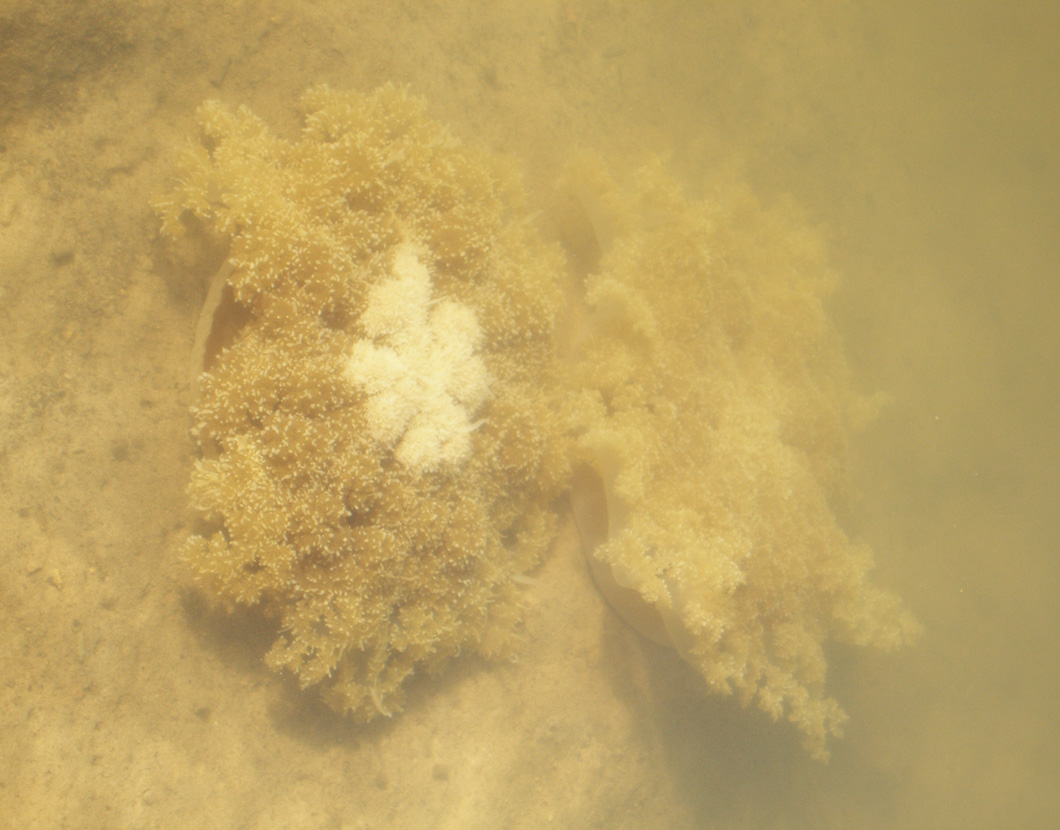Upside-down jelly
- Scientific name
- Cassiopea sp.
- Phylum
- Cnidaria
- Class
- Scyphozoa
- Sting-o-meter
- 2/5
The various Cassiopea species are among the world’s most unusual sea jellies. Although they can swim, they usually rest upside-down on the sea floor. While they have a mild sting to catch prey, Cassiopea are essentially solar-powered.
Their tissues harbour microalgae (tiny plants) called zooxanthellae that convert the sun’s energy into food. Like corals, Cassiopea can ‘bleach’ (expel their zooxanthellae) when exposed to warmer-than-average water temperatures. Cassiopea occur in estuaries in tropical and sub-tropical waters.
